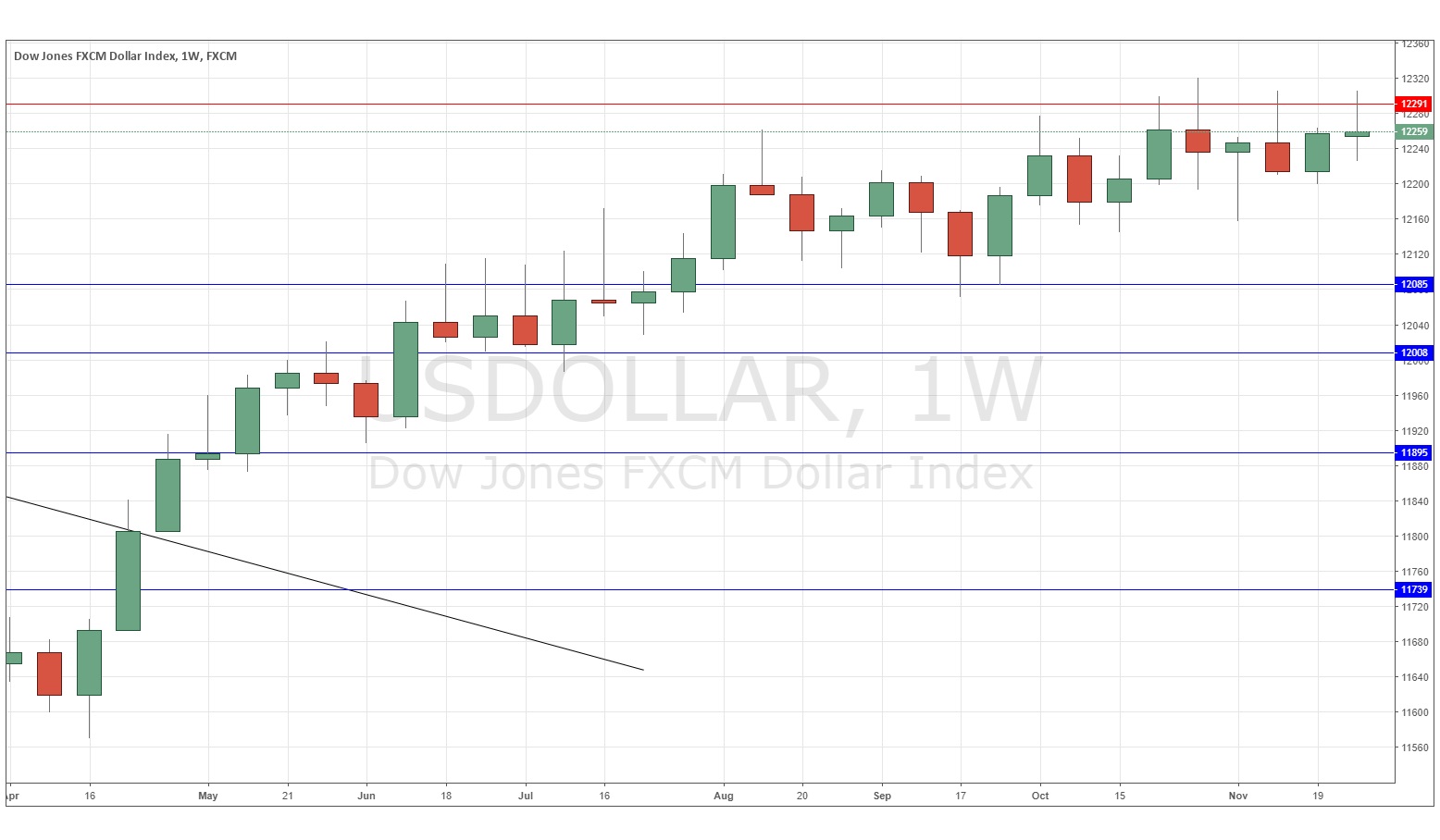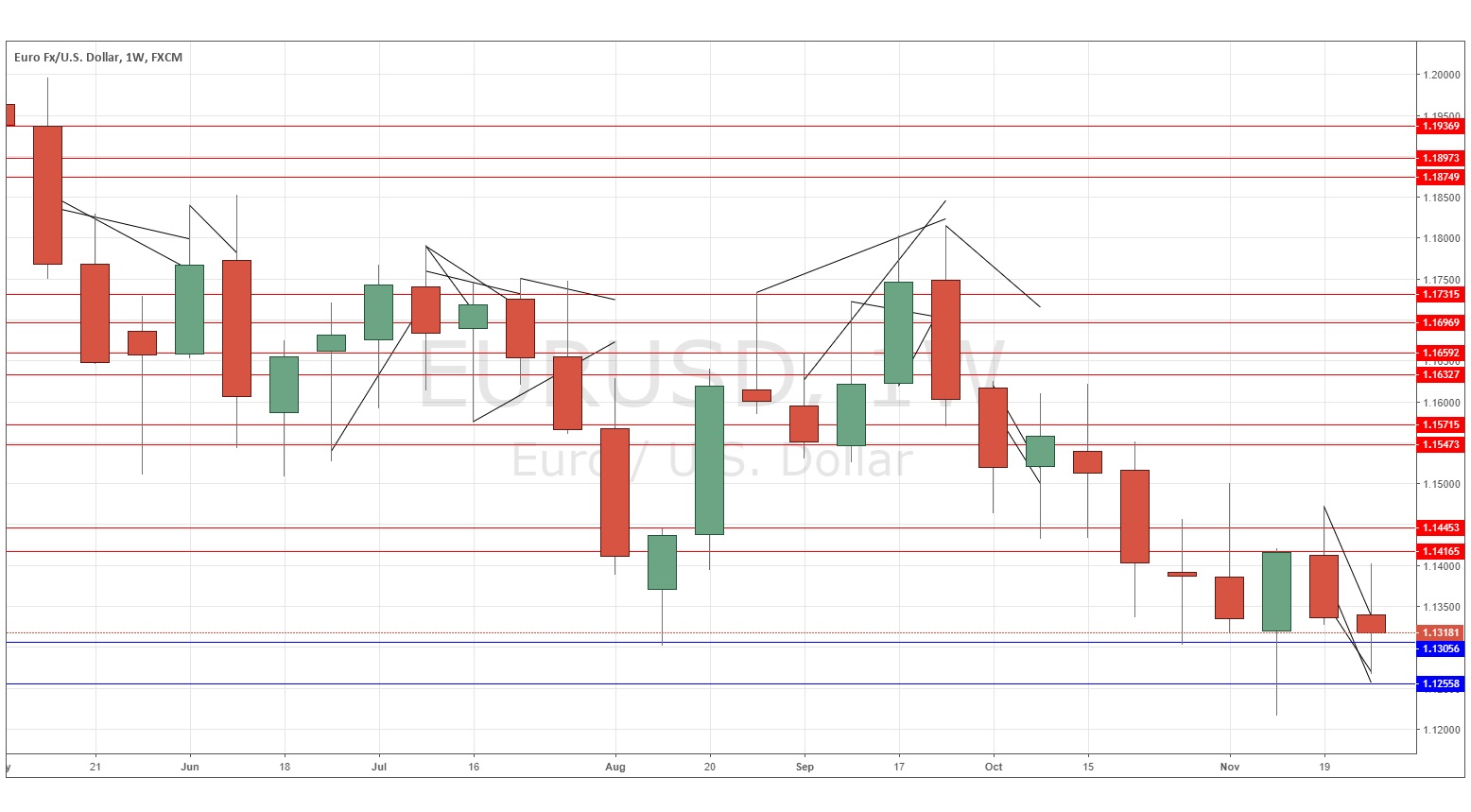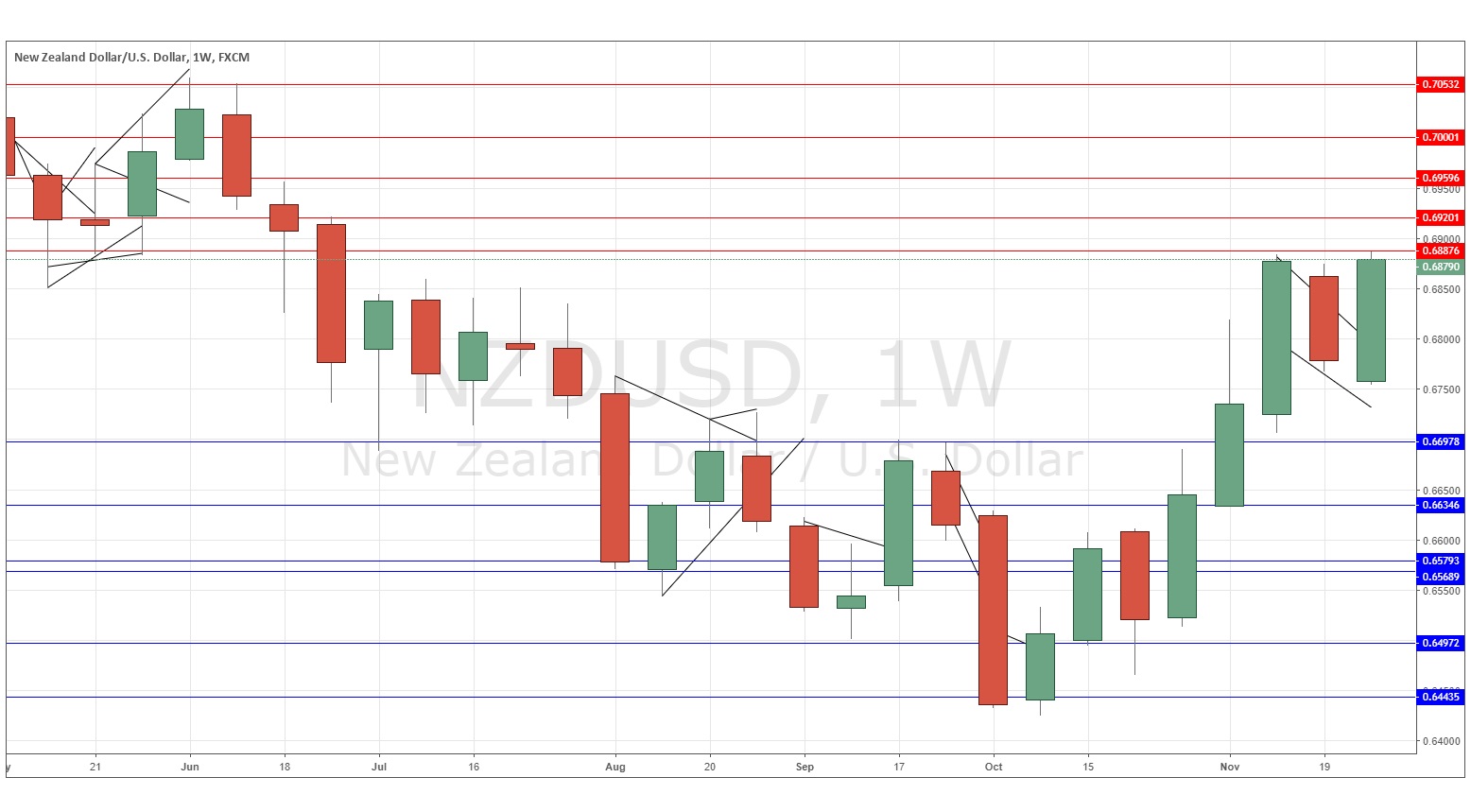The difference between success and failure in Forex trading is very likely to depend upon which currency pairs you choose to trade each week, and not on the exact trading methods you might use to determine trade entries and exits. Each week I am going to analyze fundamentals, sentiment and technical positions in order to determine which currency pairs are most likely to produce the easiest and most profitable trading opportunities over the next week. In some cases it will be trading the trend. In other cases it will be trading support and resistance levels during more ranging markets.
Big Picture 2nd December 2018
In my previous piece last week, I forecasted that the best trade would be short of the EUR/USD currency pair. The price fell by a small amount, giving a win of 0.16%.
Last week saw a rise in the relative value of the Australian and New Zealand Dollars, and a fall in the relative value of the Japanese Yen and the Canadian Dollar.
Last week’s Forex market was relatively quiet, with the U.S. Dollar losing some ground upon a dovish signal from the Federal Reserve but recovering it quickly.
This week is likely to be dominated by crucial U.S. Non-Farm Payrolls data and testimony before Congress by the Chair of the Federal Reserve.
Fundamental Analysis & Market Sentiment
Fundamental analysis still tends to support the U.S. Dollar, as American economic fundamentals continue to look strong, although there are increasing fears that further rate hikes will have a more strongly negative impact. However, it now seems that the path of hikes in the near term will be slowed, which support sentiment and fundamentals on the U.S. economy. Sentiment seems to be still in favor of the U.S. Dollar as despite quite strong recent selloffs in the stock market, the economic fundamentals are still widely seen as good. Fundamentals remain bearish on the Japanese Yen, but this currency can still benefit occasionally from safe-haven “risk off” money flow.
Brexit remains an unknown, as the British Parliament prepares to vote on the draft Brexit later this month. It currently looks as though the Government will not be able to secure approval of the deal.
The week ahead in the market is likely to be dominated by the U.S., Canadian, and Australian Dollars. Generally, volatility is low, but there are some clear trends. It is notable that despite the strong U.S. Dollar, the Australian and New Zealand Dollars are presently even stronger.
Technical Analysis
U.S. Dollar Index
The weekly price chart below shows that after last week’s bullish engulfing candlestick, this week printed a doji candlestick which failed to break above the resistance level shown in the price chart. The price remains within a multi-week consolidation between support and resistance and I have no strong confidence as to short-term direction, although the edge is still technically in line with the long-term bullish trend, which remains intact. It is now looking a little more likely that the bullish trend will continue.
EUR/USD
The weekly chart below shows last week produced another bearish candlestick, but it is a near-doji which suggests that it may be ambiguous. This is a continuation of the general long-term bearish downwards trend which has slowed but seems to still be intact. However, bears should watch out for potentially strong support at or close to the psychological level of 1.1250.
NZD/USD
The weekly chart below shows last week produced a strongly bullish candlestick, of a large range and closing very close to its high. We have a short-term bullish trend here and it is particularly noticeable as the U.S. Dollar is generally strong. If the U.S. Dollar goes down this week, this pair is likely to be one of the stronger risers. However, bulls must watch out for the key resistance close by at 0.6888.
Conclusion
Bearish on the EUR/USD currency pair.




